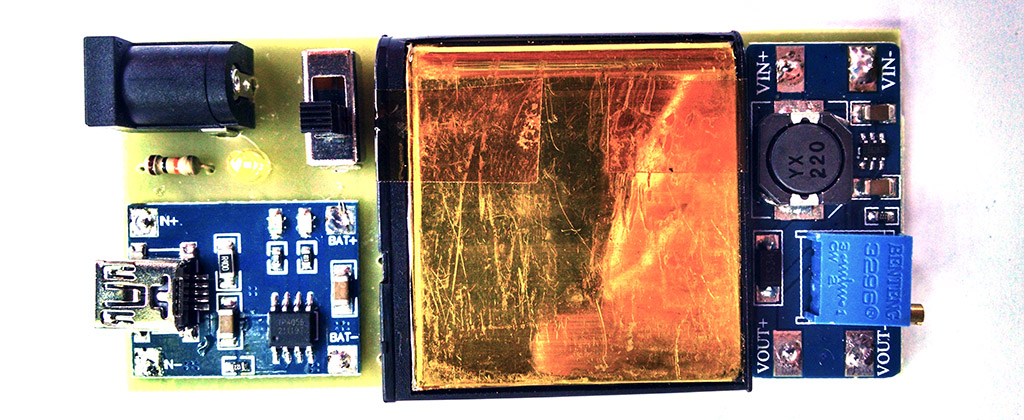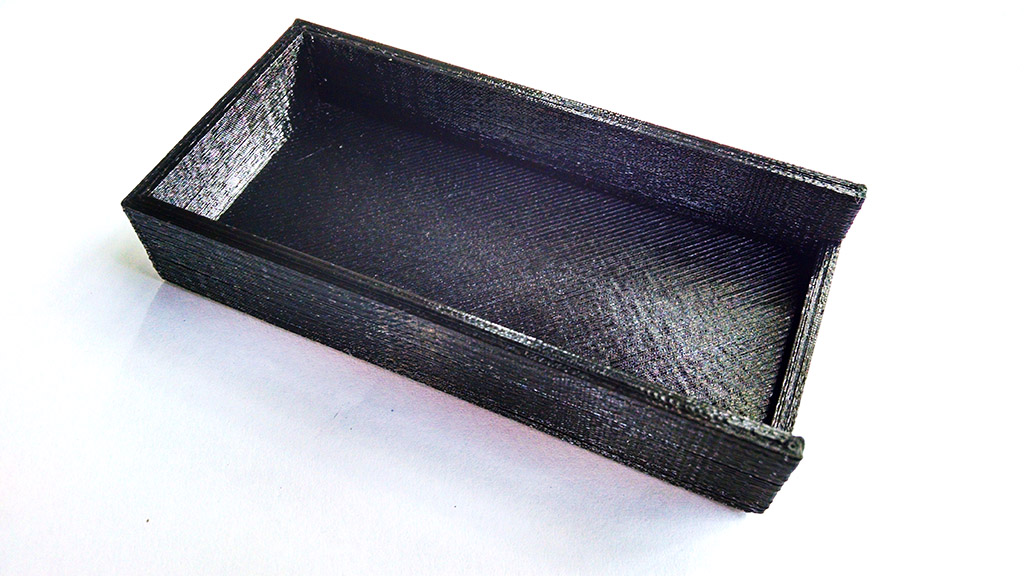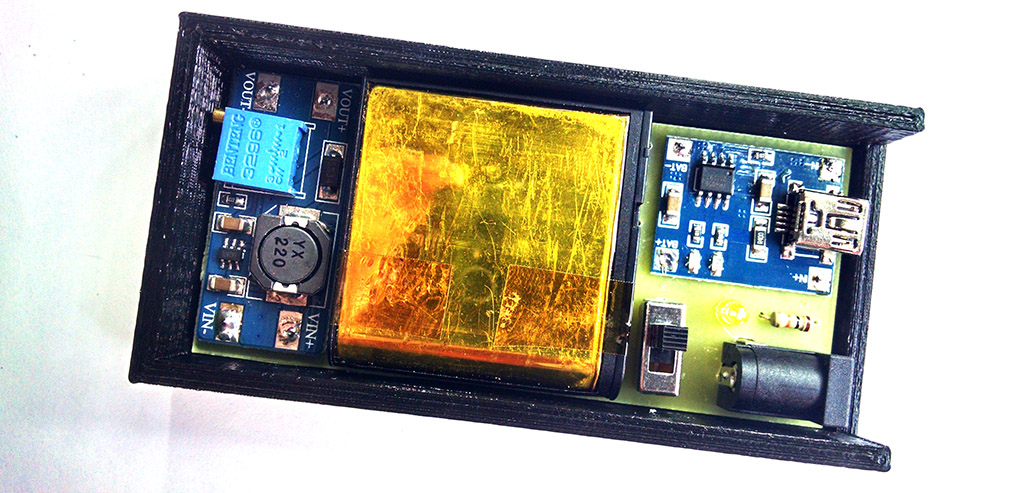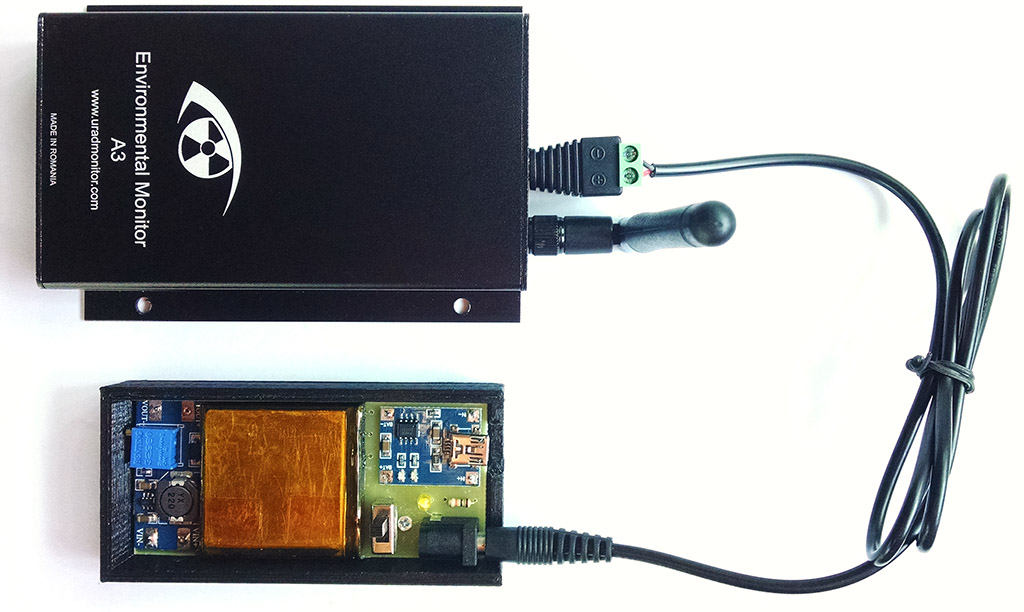I have a few excellent external batteries, the kind with USB female connectors used to charge phones. Now I needed a high voltage 12V battery, or more specifically something in the 6V-28V interval to power a uRADMonitor A3 unit. The form factor was important too, as I needed something more compact, a portable power supply with DC output. With a 3D Printer and a CNC Router at hand, a quasi-professional design becomes possible in just a few minutes.
Variable Portable power supply
It was late in the night already, I needed something quick ready in the morning. For the power source, I choose a lithium 3.7V 1500mAh battery (NP-40 type), as I had several in my toolbox. Instead of starting a DC-DC boost converter from scratch, I used a DC-DC converter module based on the MT3608 that I also had. The length of the module board matches the battery format (36mm x 17mm x 14mm):

These are excellent modules, with a max efficiency of 93%, a wide input voltage of 2V to 24V (me being interested in the lower side due to the Lithium battery use) and a maximum output voltage of 28V, configurable via a 100K pot. I’m not building a 12V portable power supply, I’m building a variable regulated power supply with a max 28V output voltage. Sweet! I needed a battery charger and went for a TP4056 module with mini USB connector and a switch to toggle the DC-DC converter.

With a minimalistic PCB design just to get the sizes and the layout, and the board was ready to be manufactured. Via the CNC Router of course.
Soldering was quick and easy, and after installing the battery using double adhesive and soldering its three pins, the device was ready for a first test.

To avoid the bottom pins touching any conductive surfaces and for the aesthetic factor, I designed a plastic enclosure and printed it on the K3000 full metal delta 3d printer.

The final assembly looks like this:

A few tests
I knew the Lithium battery had a capacity of 1500mAh on a full charge, and with an efficiency factor closer to 80% at 12V output I could calculate the amount of time this would server a consumer when the current is known. I wanted to see how it performs with an uRADMonitor A3, this being the first reason for building this portable battery.

The unit was configured to send data online, and so the start time and the stop time (due to depleted battery) were precisely recorded:

The chart shows outdoor PM2.5 levels in Carei, Romania. It also shows the unit went online at 15:28 and last data was received at 18:47, for a total of almost 3hours and a half. This is very good, as it allows the detector unit to function autonomously for a considerable amount of time.
Downloads
Here’s everything you need to build one yourself:
portable_power_supply_pcb
plastic_enclosure
